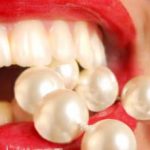It’s amazing that from the sea comes the humble oyster, and from the oyster comes the exquisite pearl, but what is an oyster? The miracle that a beautiful pearl is “born” inside the hard rough shelled living creature is amazing, but what type of creature is this within the forbidding pearl oyster shell?
Pearl oysters are animals closely related to scallops, clams, and mussels called bivalve mollusks. The pearl oyster shell has two parts, or valves, which are held together by an elastic muscle. This muscle, or ligament, is at the joint where the two valve parts come together and it normally keeps the valves open so the oyster can eat. Pearl oysters must eat and since pearl oysters are mollusks, they eat by filtering nutrients from water in through gills, to the stomach which does the digesting, then getting rid of the excess water through their shell.
EDITOR’S NOTES
Considering pearls are the only gemstones to come from a living creature, it’s easy to understand why many people consider them to be one of the most unique gems. And not only are pearls extremely unique, but in addition, they’re incredibly beautiful. People have treasured these gemstones for thousands of years, and even today, pearls continue to be considered a quintessential gemstone.
Let’s get a general understanding of the basic anatomy of a pearl oyster. Peeking inside the pearl oyster shell are 8 main body parts: mouth, stomach, heart, intestines, gills, anus, abductor muscle, and mantle. The mantle grows into the hard shell and as the pearl oyster grows, the shell grows, too.
The shell’s shiny lining called nacre is produced by the mantle.
Reproduction is most interesting because different types of pearl oysters have varying types of sex organs: some pearl oysters have both male and female sex organs, while other pearl oysters have just male or just female parts. The amazing discovery for the average person is that the lady pearl oysters let loose millions of eggs into the water and fertilization occurs externally.
The little pearl oyster larvae mature very quickly, swim around for several weeks until attaching themselves to an objects, and there remain unmoving for the rest of their lives. Being so small and immobile, pearl oysters are an easy target for many predators who wish to eat them.
Signup now and receive an email once I publish new content.
 Can the Pearl Tooth Test Really Tell You If Your Gem Is Real?
Can the Pearl Tooth Test Really Tell You If Your Gem Is Real?